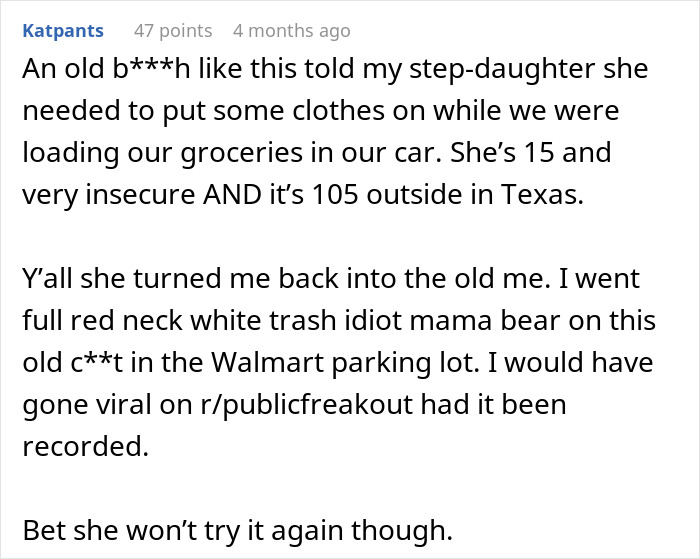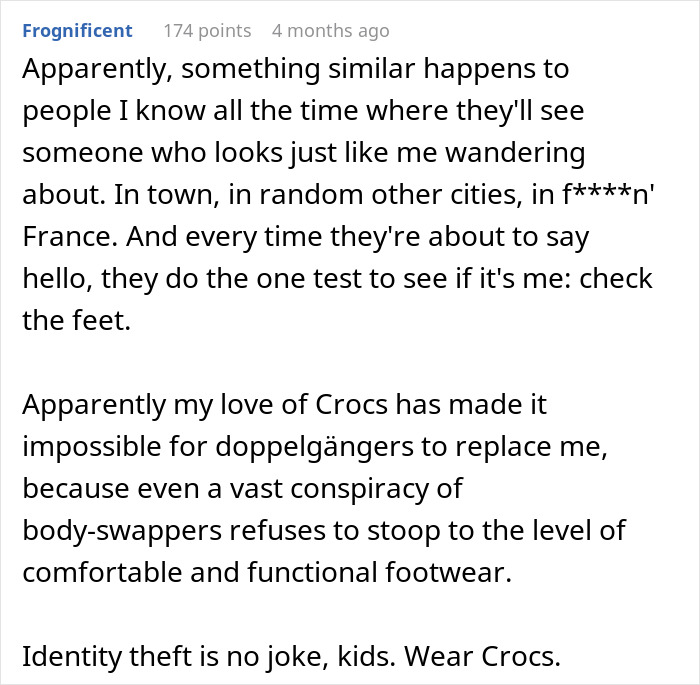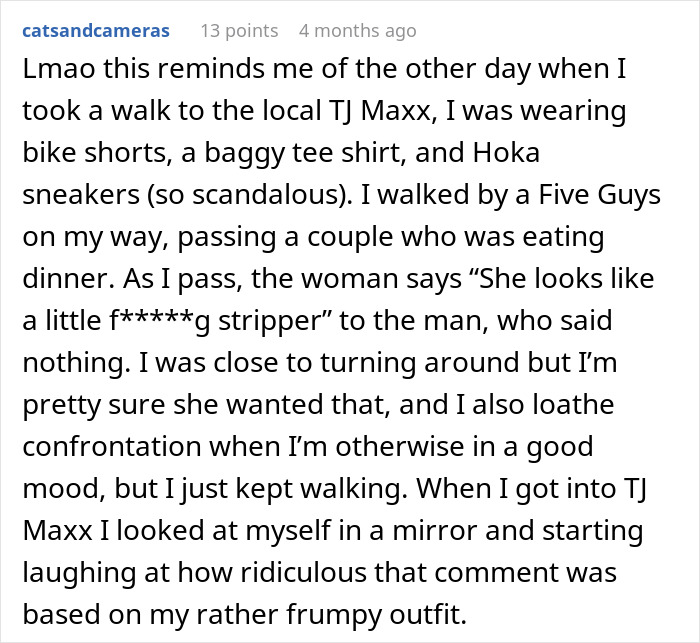You never know when you might meet your doppelganger and what situations such an encounter might lead to. For this redditor, bearing an uncanny resemblance to someone else led to a lecture from an elderly lady at the store.
The latter took the redditor for an employee and demanded to talk to the manager about her clothing. But when she did, she was only proven to be wrong—the woman indeed wasn’t an employee of the store; but Linda was.
Work attire might require people to dress according to certain rules
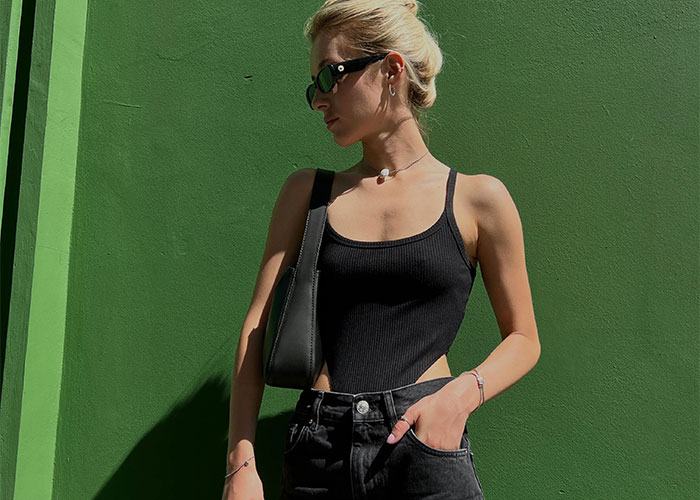
Image credits: Dasha Kvitka / pexels (not the actual photo)
The OP’s clothing was too revealing for work, because she didn’t work at the store where she met a shopper convinced otherwise
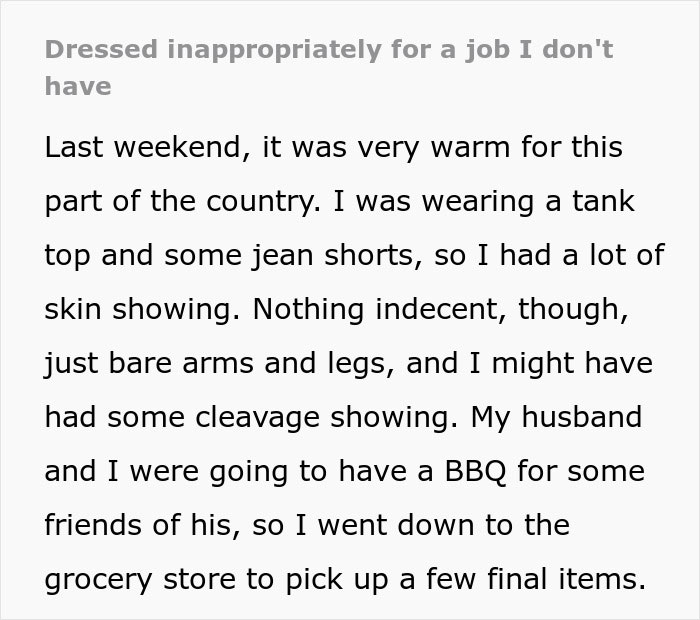
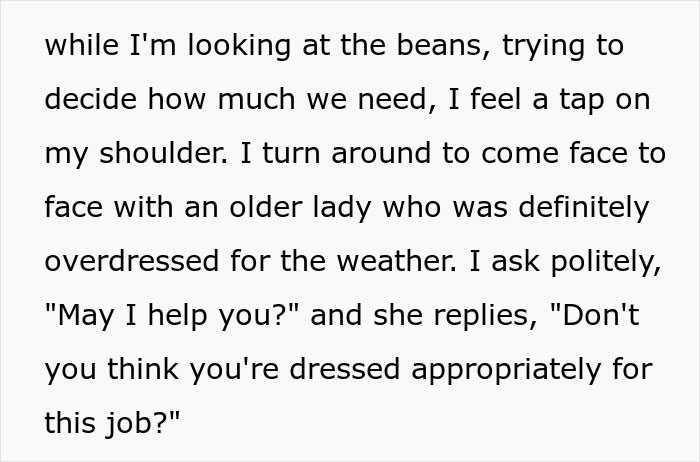
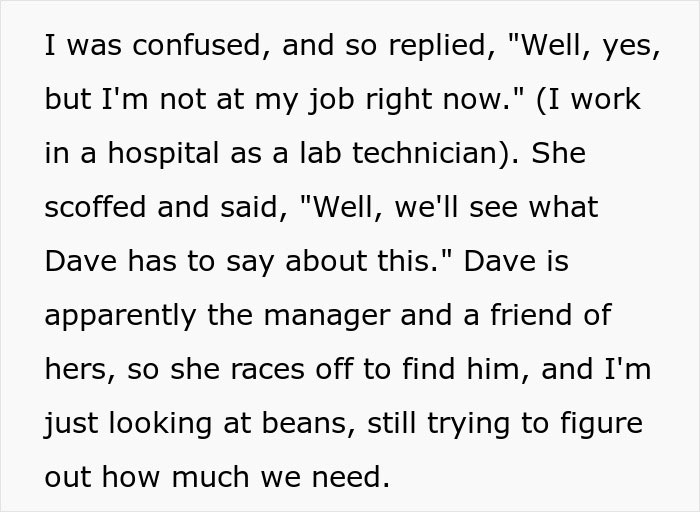

Image credits: Kampus Production / pexels (not the actual photo)
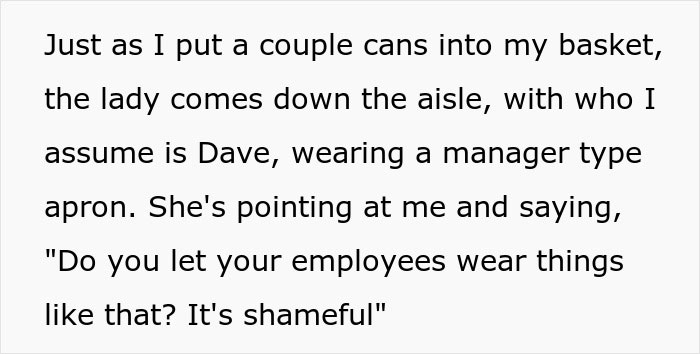

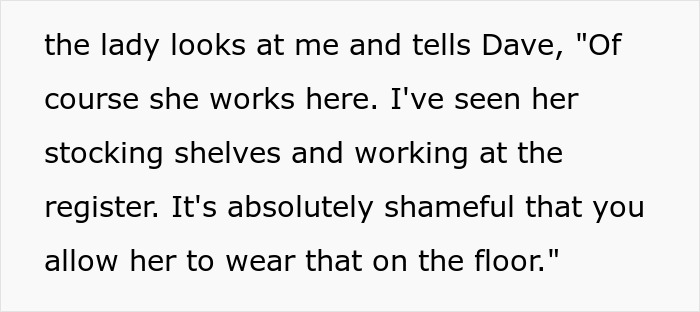
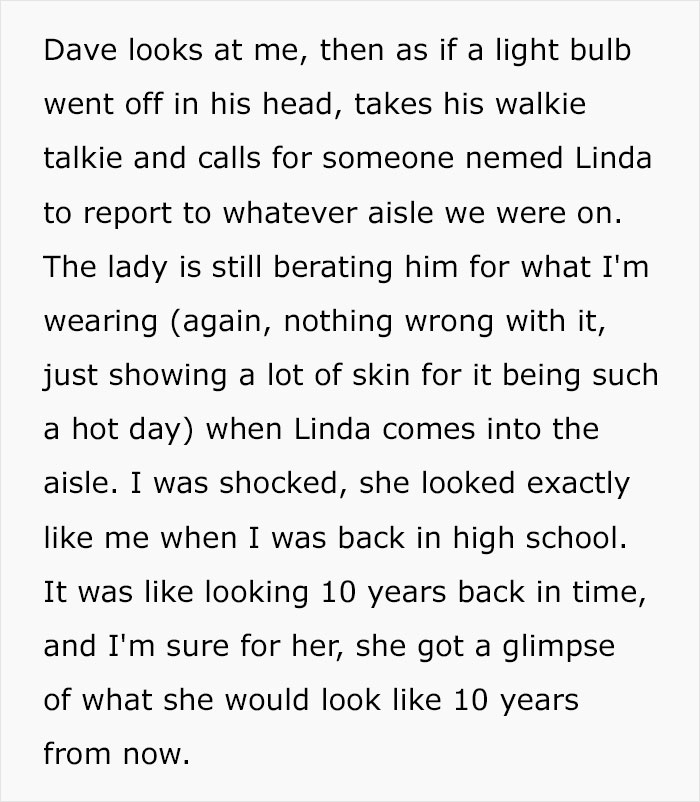

Image credits: Gustavo Fring / pexels (not the actual photo)
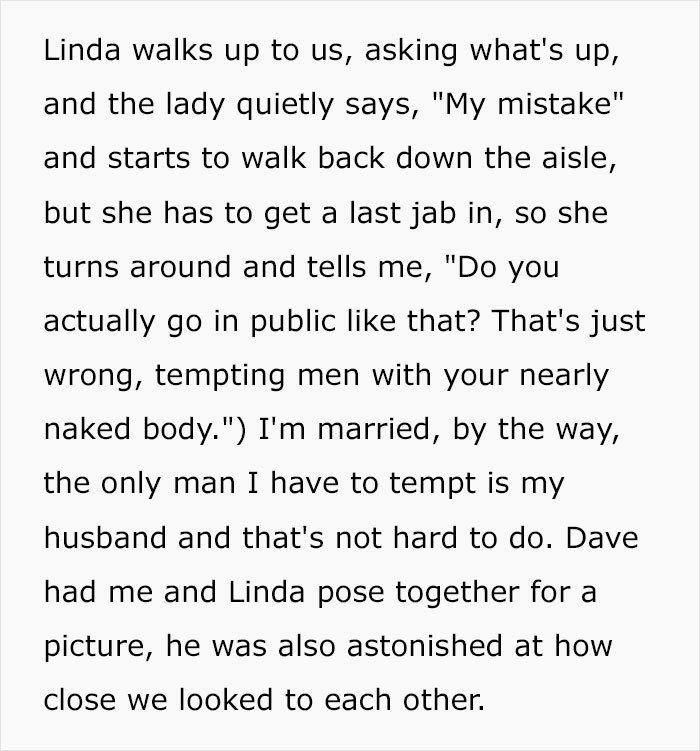
Image credits: anon
Uniforms can help customers spot the employee easier
Many stores require their employees to wear uniforms, the purpose of which—among other things—is to help people distinguish them from fellow shoppers and avoid situations such as the one the OP found herself in.
During the pre-pandemic times—before we made pajamas the official work attire—quite a few businesses seemingly required their employees to wear a uniform; a 2018 study in Australia found that roughly half of employed individuals did. And the majority of consumers seem to support such a decision: 94% of them say that it helps them distinguish the workers in a mass of people and nearly as many believe that smart uniforms reflect well on the brand. (Maybe that’s why only 1% of those surveyed said they wouldn’t take a job at a workplace where a uniform is mandatory.)
As for the reasons employees themselves enjoy uniforms, they like not having to think twice about what to wear, not having to buy work clothes, the convenience of how practical the uniforms are for the job, and the standing-out-in-the-crowd factor as well.
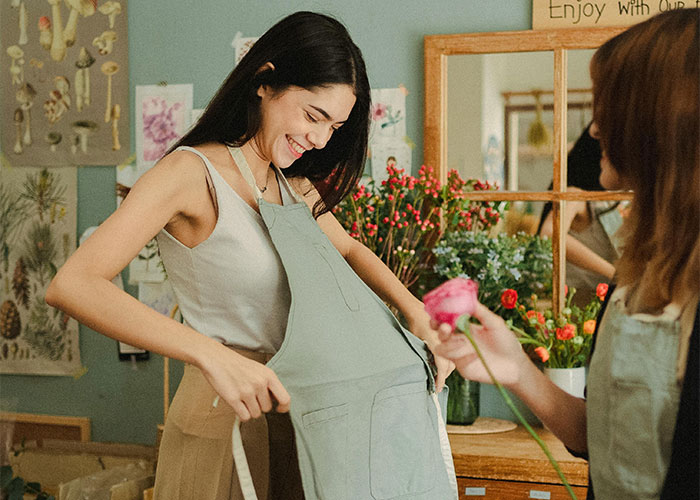
Image credits: Amina Filkins / pexels (not the actual photo)
Certain ways of dressing can even influence our achievements at work
Not all businesses that have regulations regarding clothing have uniforms, though. In the US, for instance, only roughly 23% of employees wear them to work most days, while the majority—41% to be exact—opt for something that fits within the definition of ‘business casual’.
Whether it’s a uniform or a dress code policy, a certain way of dressing can have an effect on one’s achievements at work. Studies show that the clothing we choose tends to influence our mental and physical performance.
For instance, wearing formal business attire reportedly improves abstract thinking abilities, choosing a white lab coat (or something resembling it, at least) tends to improve people’s focus, and staying away from informal clothing can help them succeed at negotiating.
But even though all these examples seem to favor the somewhat conventional professional decking out, studies also suggest that people showing a pinch of personality through their clothing—a pair of fun shoes, for instance—can take the way others view them even one step further in the positive direction.
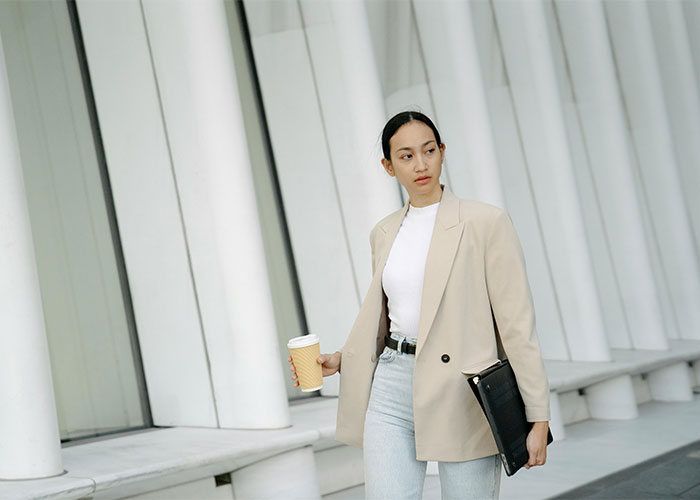
Image credits: John Diez / pexels (not the actual photo)
The chances of meeting your doppelganger on a regular day are slim
Even though uniforms seem to clearly help people distinguish employees from random passersby, in the OP’s case, it wasn’t only lack of one that got the elderly shopper confused; it was the redditor’s uncanny resemblance to a person that actually worked there.
The odds of meeting your doppelganger in real life are slim, at best; research suggests that the chance of a single pair of doppelgangers existing anywhere in the world is one in 135. However, running into a lookalike is arguably far more likely.
According to Francois Brunelle, a photographer and the mastermind behind the I’m not a look-alike project dedicated to taking photographs of similar-looking people around the world, it’s about the sum of the parts rather than one feature. The artist suggested that when seen apart, the subjects of his photographs might look like exact clones, but it’s when you put them next to each other when you really start to notice the differences, BBC reports.
And that’s what the store manager in the OP’s story did—he called the redditor’s lookalike, Linda and asked her to stand next to the shopper. That’s when the elderly woman realized her mistake, but even then she felt the urge to make one final remark about the OP’s appearance.
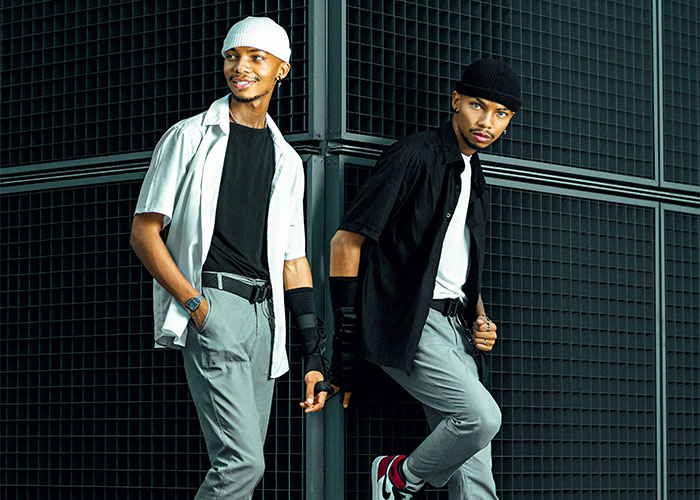
Image credits: Lucretius Mooka / pexels (not the actual photo)
Fellow redditors shared their thoughts in the comments

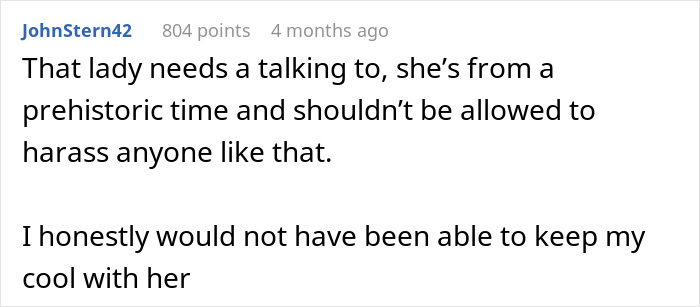









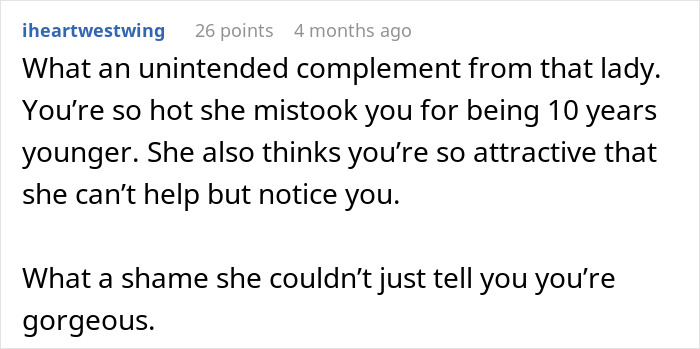
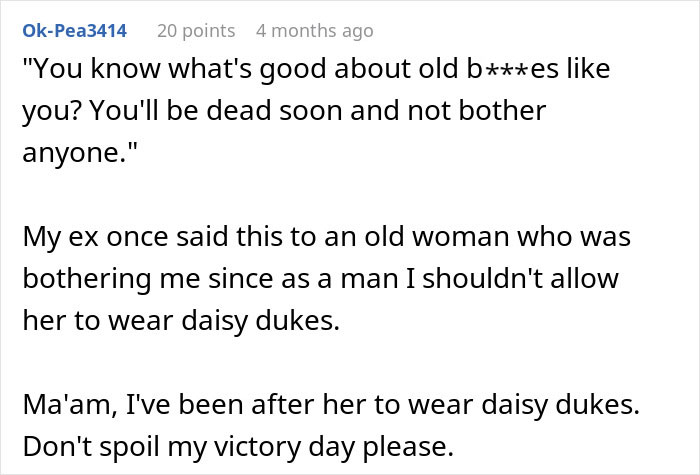
Some seem to have encountered similar situations themselves
